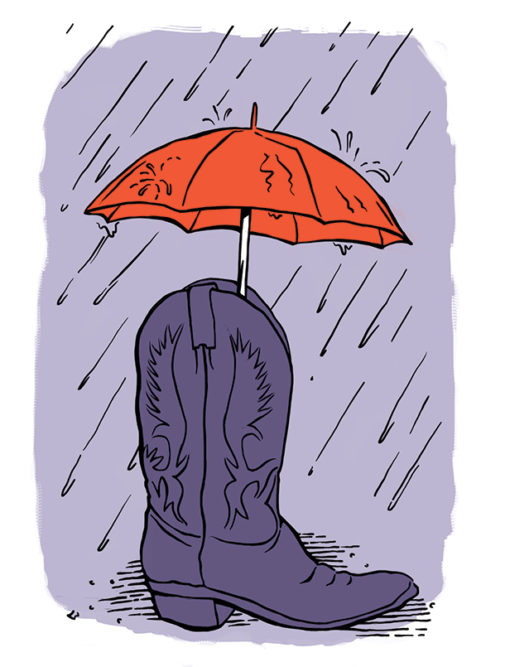As you read this article, we will all be just past the midyear mark for 2020. While I usually save most of my “year-end” reflection for the end of the year, there seems to be plenty of things to reflect on just in the first half of this year.
In particular, I have noticed with much alarm that our agricultural systems become very difficult to live with when out-of-the-ordinary events take place. After a good deal of reflection, I wonder if these uncomfortable outcomes are the unintended consequences of highly efficient systems. Each of you, as an agricultural producer, is part of a well-developed system that has been honed to convert the fewest resources (land, water, nutrients, labor) into the maximum amount of food.
The commodity nature of agricultural products has driven the search for even more efficient ways to convert resources into food to preserve profit margins. Our highly efficient systems have trimmed away most of the extras, leaving only what is necessary to get the job done. While necessary to preserve profitability, the lack of reserve capacity and flexibility leaves our food production systems struggling to withstand difficult times, leaving us trapped in a difficult position.
Recent events that come to mind include the major weather events of early 2019 in the Upper Midwest, the beef processing plant fire in August 2019 – and most recently, the COVID-19 pandemic. Events like these send shockwaves through the agricultural community and threaten the financial viability of some operations.
Tools of resilience
It seems wise for us to work some resilience into our agricultural production systems. Resilience is the quality of a system that allows it to quickly recover after a difficult time, to spring back into shape after taking a hit. Resilience is a key feature of sustainable systems, allowing them to experience challenges and setbacks without threatening long-term sustainability. How do we build resilience into our agricultural production systems? This process will certainly be different for every operation, but here are some ideas I’ve considered.
- Diversity: The old adage admonishing us “don’t put all your eggs in one basket” remains true. Tremendous resilience can be derived from developing a variety of enterprises within a system so that if one fails, others may remain successful.
- Flexibility/Adaptability: Another time-honored axiom instructs us to “make lemonade when life gives us lemons.” The wisdom in this is that flexible systems have the ability to take advantage of opportunity brought on by adversity.
- Reserve: “Save some for a rainy day” is yet another proverb with resiliency implications. Having some money in the bank and some feed stored away can certainly help an operation make it through some challenging times.
If you’ve stayed with me this far, you can probably appreciate the tension between maximizing efficiency and maintaining resilience. Very resilient systems frequently have a lot of redundancy and reserve, making them very inefficient and costly to maintain. Very efficient systems are productive but are often very fragile and vulnerable to collapse. Efficient systems that become dysfunctional are also very costly. The key is finding balance that provides sufficient profitability to meet the goals of the operation while still having enough resiliency to weather difficult times.
Want some practical ways to start building resiliency? Consider an enterprise you can add to your current operation without spending a lot of extra time and money. Developing part of your calf crop into yearlings or running cattle on leased corn residue are a couple of common examples. Think about contingency plans for foreseeable but uncommon events. We all have fresh experience with interruptions in the supply of feedstuffs and marketability of cattle. Use those lessons to develop a plan for the next time it happens.
If you want a specific example related to foot and mouth disease, develop a Secure Beef Supply plan (securebeef.org) to prepare for future interruptions in commerce associated with disease control efforts. Consider ways you can adjust your operations so that, in the long term, you can be both profitable and resilient. For those in the cow-calf business, this may be a focus on building a cow herd that is very well adapted to its environment.
Resilient health inputs
At this point, you might be wondering why a veterinarian is writing an article on the topic of resiliency. As I have interacted with people struggling with severe animal health challenges, a common thread appears in all of these situations: The effort to trim costs by minimizing inputs in order to maintain financial viability can leave animals vulnerable to disease when unexpected circumstances develop. Often, the cost of disease far exceeds the gain made by trimming costs. These situations are heartbreaking, as hard-working people invest everything they have in an incredible uphill battle to save their operations.
As you consider building resilience, ask yourself why you want your operation to be resilient. Are you working to leave a farm or ranch to your children? Do you take pride in your effort to feed other people and want to maintain your ability to do that? Do you enjoy the opportunity to interact with nature in your work? The answer to the question of “why” will help provide clarity and motivation to discover and implement changes that will keep your operation both profitable and resilient.







